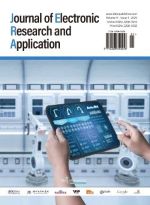Abstract
This paper presents CW-HRNet, a high-resolution, lightweight crack segmentation network designed to address challenges in complex scenes with slender, deformable, and blurred crack structures. The model incorporates two key modules: Constrained Deformable Convolution (CDC), which stabilizes geometric alignment by applying a tanh limiter and learnable scaling factor to the predicted offsets, and the Wavelet Frequency Enhancement Module (WFEM), which decomposes features using Haar wavelets to preserve low-frequency structures while enhancing high-frequency boundaries and textures. Evaluations on the CrackSeg9k benchmark demonstrate CW-HRNet’s superior performance, achieving 82.39% mIoU with only 7.49M parameters and 10.34 GFLOPs, outperforming HrSegNet-B48 by 1.83% in segmentation accuracy with minimal complexity overhead. The model also shows strong cross-dataset generalization, achieving 60.01% mIoU and 66.22% F1 on Asphalt3k without fine-tuning. These results highlight CW-HRNet’s favorable accuracy-efficiency trade-off for real-world crack segmentation tasks.
References
Yuan Q, Shi Y, Li M, 2024, A Review of Computer Vision-Based Crack Detection Methods in Civil Infrastructure: Progress and Challenges. Remote Sensing, 16(16): 2910.
Huang S, Chen H, Yan L, et al., 2025, A Review of the Progress in Machine Vision-Based Crack Detection and Identification Technology for Asphalt Pavements. Digital Transportation and Safety, 4(1): 65–79.
Zawad MRS, Zawad MFS, Rahman MA, et al., 2021, A Comparative Review of Image Processing Based Crack Detection Techniques on Civil Engineering Structures. Journal of Soft Computing in Civil Engineering, 5(3): 58–74.
Long J, Shelhamer E, Darrell T, 2015, Fully Convolutional Networks for Semantic Segmentation, Proceedings of the IEEE Conference on Computer Vision and Pattern Recognition, 3431–3440.
Lin TY, Dollar P, Girshick R, et al., 2017, Feature Pyramid Networks for Object Detection, Proceedings of the IEEE Conference on Computer Vision and Pattern Recognition, 2117–2125.
Ronneberger O, Fischer P, Brox T, 2015, U-Net: Convolutional Networks for Biomedical Image Segmentation, International Conference on Medical Image Computing and Computer-Assisted Intervention, Springer International Publishing, Cham, 234–241.
Huang G, Liu Z, Van Der Maaten L, et al., 2017, Densely Connected Convolutional Networks, Proceedings of the IEEE Conference on Computer Vision and Pattern Recognition, 4700–4708.
Dai J, Qi H, Xiong Y, et al., 2017, Deformable Convolutional Networks, Proceedings of the IEEE International Conference on Computer Vision, 764–773.
Li Q, Shen L, 2022, Wavesnet: Wavelet Integrated Deep Networks for Image Segmentation, Chinese Conference on Pattern Recognition and Computer Vision (PRCV), Springer Nature Switzerland, Cham, 325–337.
Li Q, Shen L, 2022, Neuron Segmentation Using 3D Wavelet Integrated Encoder–Decoder Network. Bioinformatics, 38(3): 809–817.
Yuan F, Lin Z, Tian Z, et al., 2025, Bio-Inspired Hybrid Path Planning for Efficient and Smooth Robotic Navigation. International Journal of Intelligent Robotics and Applications, 2025: 1–31.
Liang B, Yuan F, Deng J, et al., 2025, Cs-pbft: A Comprehensive Scoring-Based Practical Byzantine Fault Tolerance Consensus Algorithm. The Journal of Supercomputing, 81(7): 859.
Zhang K, Yuan F, Jiang Y, et al., 2025, A Particle Swarm Optimization-Guided Ivy Algorithm for Global Optimization Problems. Biomimetics, 10(5): 342.
Yuan F, Huang X, Jiang H, et al., 2025, An xLSTM–XGBoost Ensemble Model for Forecasting Non-Stationary and Highly Volatile Gasoline Price. Computers, 14(7): 256.
Kulkarni S, Singh S, Balakrishnan D, et al., 2022, CrackSeg9k: A Collection and Benchmark for Crack Segmentation Datasets and Frameworks, European Conference on Computer Vision, Springer Nature Switzerland, Cham, 179–195.
Yang N, Li Y, Ma R, 2022, An Efficient Method for Detecting Asphalt Pavement Cracks and Sealed Cracks Based on a Deep Data-Driven Model. Applied Sciences, 12(19): 10089.
Zhao H, Shi J, Qi X, et al., 2017, Pyramid Scene Parsing Network, Proceedings of the IEEE Conference on Computer Vision and Pattern Recognition, 2881–2890.
Yuan Y, Chen X, Wang J, 2020, Object-Contextual Representations for Semantic Segmentation, European Conference on Computer Vision, Springer International Publishing, Cham, 173–190.
Chen LC, Papandreou G, Schroff F, et al., 2017, Rethinking Atrous Convolution for Semantic Image Segmentation. arXiv. https://arxiv.org/abs/1706.05587
Yu C, Gao C, Wang J, et al., 2021, Bisenet v2: Bilateral Network with Guided Aggregation for Real-Time Semantic Segmentation. International Journal of Computer Vision, 129(11): 3051–3068.
Fan M, Lai S, Huang J, et al., 2021, Rethinking Bisenet for Real-Time Semantic Segmentation, Proceedings of the IEEE/CVF Conference on Computer Vision and Pattern Recognition, 9716–9725.
Hong Y, Pan H, Sun W, et al., 2021, Deep Dual-Resolution Networks for Real-Time and Accurate Semantic Segmentation of Road Scenes. arXiv. https://arxiv.org/abs/2101.06085
Liu Z, Cao Y, Wang Y, et al., 2019, Computer Vision-Based Concrete Crack Detection Using U-Net Fully Convolutional Networks. Automation in Construction, 104: 129–139.
Shi P, Zhu F, Xin Y, et al., 2023, U2CrackNet: A Deeper Architecture with Two-Level Nested U-Structure for Pavement Crack Detection. Structural Health Monitoring, 22(4): 2910–2921.
Yu G, Dong J, Wang Y, et al., 2022, RUC-Net: A Residual-UNet-Based Convolutional Neural Network for Pixel-Level Pavement Crack Segmentation. Sensors, 23(1): 53.
Li Y, Ma R, Liu H, et al., 2023, Real-Time High-Resolution Neural Network with Semantic Guidance for Crack Segmentation. Automation in Construction, 156: 105112.
